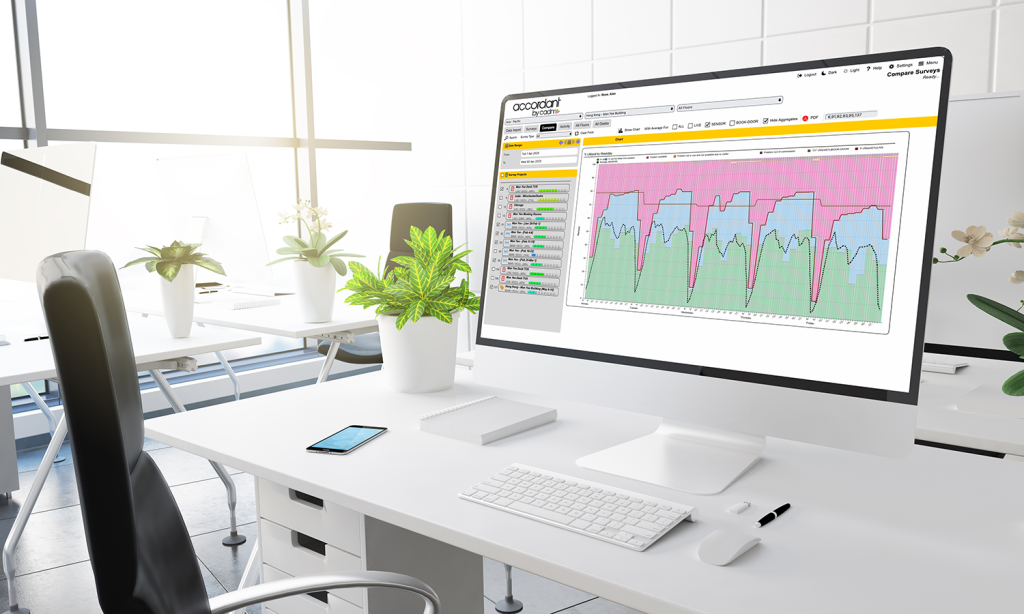As the Easter holidays come and go, many workplace managers and business leaders notice a familiar trend: a drop in office utilisation. With school breaks, bank holidays, and the natural desire for a bit of time off, it’s no surprise that desks are emptier, meeting rooms go unused, and the usually bustling office floor feels a touch quieter.
But here’s the important thing — you shouldn’t worry about it.
Seasonal Trends Are Normal
Office utilisation is not static. It ebbs and flows throughout the year, shaped by everything from national holidays to summer breaks and even the weather. Easter, much like the Christmas period, is a well-known time for a natural lull in attendance. People plan annual leave, family trips take priority, and hybrid workers often opt to stay remote.
Rather than viewing this temporary dip as a red flag, it’s more helpful to see it as part of a predictable pattern. In fact, when you look at your data with a wider lens — say, comparing year-over-year Easter periods — you’ll likely find consistent behaviour across your teams.
Avoid Overreacting to Short-Term Data
It’s easy to fall into the trap of making big decisions based on a few weeks of data. But reacting to short-term anomalies can lead to skewed strategies. A drop in office usage over the holidays isn’t a signal that your workplace strategy is failing — it’s a sign that your people are simply using their flexibility.
Instead of recalibrating policies or panicking over ‘underperformance’, consider smoothing your data analysis over a longer period — monthly or quarterly averages provide much more stable insights than week-to-week comparisons.
Use the Time to Reflect, Not React
Rather than fretting about utilisation metrics, use the Easter lull as an opportunity to step back and reflect. Are your spaces being used effectively when the office is full? Do employees feel empowered to use the office in a way that supports their work? Are you gathering the right kinds of feedback, alongside your data?
These are far more valuable questions than obsessing over a week or two of empty desks.
How Accordant Helps You Track Office Utilisation with Confidence
This is where workplace technology, like Accordant, can really help bring clarity.
With Accordant, you’re not reliant on a single source of data. Instead, the platform enables you to track office utilisation using a range of reliable methods, including:
- Human observation – great for validating data, especially when looking beyond just desk usage to include meeting room activity and movement throughout the wider office.
- Badge swipes – to capture building entry activity.
- Network connections – to detect active device use onsite.
- Sensor data – for precise, real-time occupancy tracking.

By combining multiple data sources, Accordant helps you build a more complete, accurate picture of how your space is being used — and crucially, how that changes over time. It also means you’re better equipped to spot trends, understand anomalies like Easter dips, and make confident, long-term decisions without reacting to short-term shifts.
Moving Forward with Confidence
Here’s how you can stay grounded in your workplace strategy after the Easter period:
- Zoom out: Look at data trends over months and quarters, not days and weeks.
- Expect seasonality: Build it into your analysis and reporting so you’re not caught off-guard.
- Benchmark year-on-year: Compare this year’s Easter period to the last to spot trends more clearly.
- Communicate clearly: Help stakeholders understand that short-term dips are expected and not a sign of failure.
- Use smarter tools: Leverage platforms like Accordant to track utilisation with confidence and precision.
- Focus on quality, not just quantity: Utilisation isn’t the only measure of success — engagement, satisfaction, and productivity matter too.
Final Thought
A quiet office in April isn’t a sign that hybrid work is broken — it’s a sign that people are enjoying the flexibility we’ve built into the modern workplace. With the right tools and a clear perspective, you can trust your data and move forward with confidence, knowing that the bigger picture matters far more than a few quiet days.